 For Architects, By Architects: The Story Behind ArchiOffice
For Architects, By Architects: The Story Behind ArchiOffice
This week, we have another inspiring story from an architect turned accidental entrepreneur. He turned a need for managing finances at his own small firm into a new software tool to solve the problem. He shared the idea with some colleagues, formed a small company, and eventually sold that company. Today, it’s offered to architects throughout the world.
This week on EntreArchitect podcast, For Architects, By Architects: the story behind ArchiOffice with Steven Burns.
Background
Steven is an architect based in Los Angeles and the creator of ArchiOffice project management software. He’s currently the Chief Creative Officer of BQE Software, the makers of ArchiOffice.
Steven’s Origin Story
Steve majored in sculpture at Syracuse University. When he had his senior show, by accident a woman approached him and asked his plans after school. He joked that he was going to wait tables, but she prompted him to study architecture. He went to MIT for architecture, which he didn’t love, after not getting into his first choice, Harvard. After his first year, he went back and reread his application essay and decided to reapply to Harvard. This time, he got in. The second time around, his classmates and experiences were great and he thrived.
After graduation, he started his career at SOM in Chicago. During his time there, he put a few goldfish in an empty bowl. People liked it, so he went and bought a tank, some sand and a fish for every partner – fourteen – with a sign that said “Please don’t feed the partners.” Within three months, every partner knew him. Eventually, Bruce Graham took an interest in Steve and helped shape much of his journey in architecture.
When Steve and his wife were in Berlin working for SOM and were about to have children, they decided to take the risk to move to Chicago and Steve opened an office on his own in 1993. There was no business plan and nothing written down. After a month of working alone, he brought a friend on board to join the business. They were frugal, finding a small space and building it out on their own. Eventually they hired someone, and they felt the pressure of having to provide for them.
In 2007, he sold the firm. They chose two partners and were able to watch both of them grow into the roles perfectly. They learned that their partners weren’t like them, which was good; they should be able to fill in the spaces where you have weaknesses. Steven felt that he and his partner were able to retain some control while still giving the partners some ownership of their roles.
Would you do it differently if you had to do it over again?
If Steven had to do it all over again, he would hope that he would at least have written some kind of business plan before starting out. However, he knows himself well enough to know his spontaneity and that, in some ways, he hasn’t changed since then.
How do you pick the right person to transition your firm over to?
It’s a hard decision, and you have to trust your intuition. Steve feels lucky to have had great picks with his wife and his partner, but has also learned that when you have something that isn’t a fit, it’s better to take care of it right away. In the end, it’s best for everyone.
Why did you sell your company and where were you headed after that?
Steven was a designer at heart, and he wanted to work on designing a software for his firm. He bought a Mac-based program, File Maker Pro, and used their easy scripting program to build things to solve problems. He’d set a task to take care of and, after work, for three years he would work until 3 or 4 AM creating things. When he showed coworkers, they would challenge him to create different things.
One of their employees called his old boss and told him about Steven’s software. When he came to look at it, he asked if he could buy it. Steven cleaned it up and let the guy try it for a year for free. Realizing he lacked the formal background, he hired a team in Melbourne, Australia who could work with him at night three or four days a week. In a few years, ArchiOffice was a commercial product.
Word of mouth was the key to spreading the word. They quickly had 500 firms using the software, so they brought in a management team to make sure they were doing things correctly. Since they were providing something to help with people’s businesses, Steven wanted to make sure they were doing things correctly. Surprisingly, one of the recommendations was for Steven to fully pursue software development.
He decided to dive in 100%. In 2007, he sold his portion of the firm and started in a new space with four people headed toward software design.
What were the next steps for ArchiOffice?
Unfortunately in that season, they found that architects weren’t buying software, they were letting go of employees. They got very close to shutting down the company in 2009. That same year, Steven had purchased three booth spots at the AIA Convention and rented a Volkswagon Bug with a jet engine in it to bring along.
They had a ton of people come, including the CEO of one of their competitors. After returning to Chicago, Steven got to talk to Shafat Qazi, BQE Software’s CEO, about the ArchiOffice. A few days later, Shafat came back and asked to acquire the company.
Steven felt the burden of building a company, the need to provide for those who were working for him and the desire to fulfill the needs of his clients. He agreed to the deal, and in late 2009 BQE acquired ArchiOffice.
With this transition, Steven and his family moved from Chicago to LA.
What’s next?
Today, Steven and his family live in a new-urbanism area near LA. BQE Software had a goal to be the best, and Steven moved into a role to help bring things together. Currently there are some exciting things coming down the pipeline.
What did your hardships building the business teach you?
For a long time, Steven didn’t talk about how hard it was to build the business. Eventually he learned that his problems weren’t unique, and that there’s a lot to be learned from going through challenges.
What is the one thing that small firm architects can do today to build a better business tomorrow?
“Don’t open your email until 2 PM. If you start your morning with your email, all of the things you wanted to do keep getting pushed off. The beauty of email is that it’s a-synchronistic communication. Whatever opportunities you have that you want to pursue, use your time for those.” – Steven Burns
Connect with Steve about online at BQE.com or via LinkedIn, Twitter, and Instagram.
Visit our Platform Sponsors
Freshbooks is the easy way to send invoices, manage expenses, and track your time.
Access your free 30 day trial at EntreArchitect.com/FreshBooks. (Enter EntreArchitect)
NCARB is helping architects reach their goals! Get back on track with the new AXP Portfolio.
Visit EntreArchitect.com/NCARB to learn more today.
BQE Software is designed specifically for architect’s project management!
Get a free 15-day trial at EntreArchitect.com/BQE.
ARCAT has huge libraries of free content, Specs, CAD, BIM and more. No registration required. Want to collaborate with colleagues in real time?
Visit EntreArchitect.com/ARCAT and click Charrette for more information.
Referenced in this Episode
EntreArchitect Profit for Small Firm Architects course (unlimited free access)
The post EA167: For Architects, By Architects with Steven Burns [Podcast] appeared first on EntreArchitect // Small Firm Entrepreneur Architects.
